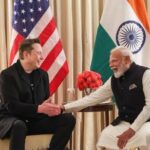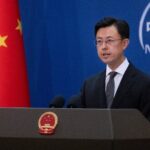July 23, 2025 | Special Report
In the digital age, battles for influence no longer require boots on the ground. They unfold on screens — subtle, sophisticated, and often invisible to the untrained eye. The latest frontline? YouTube.
In a sweeping operation that underscores the geopolitical stakes of online platforms, Google has terminated over 11,000 YouTube channels during Q2 2025 as part of a deep investigation into coordinated influence operations. The bulk of these channels—over 7,700—were linked to China-backed efforts, with thousands more traced to Russia, and smaller networks associated with Iran, Azerbaijan, Turkey, and others.
The move highlights a fast-evolving war in cyberspace — not fought with malware or hacks, but with narrative manipulation, state-sponsored propaganda, and AI-generated personas posing as real people.
🧭 Chapter 1: The Scope of the Operation
The operation was led by Google’s Threat Analysis Group (TAG), a specialized unit responsible for identifying government-backed threats across the company’s platforms, including Gmail, YouTube, Blogger, and AdSense.
Between April and June 2025, TAG:
- Removed 7,799 YouTube channels linked to China
- Terminated 2,018 channels associated with Russian operations
- Took action against coordinated influence efforts in Iran, Azerbaijan, Turkey, Ghana, and Israel
- Disabled associated AdSense accounts and domains to cut funding and visibility
The removed content often posed as independent media, but upon closer examination, TAG found signs of inauthentic behavior: reused scripts, repeated talking points, cross-posting, bot-generated engagement, and state-aligned geopolitical messaging.
🎯 Chapter 2: Why YouTube?
YouTube, with over 2.7 billion monthly users, is the second most visited website globally. Its recommendation algorithm, vast reach, and hybrid role as both an entertainment and news platform make it an ideal vector for influence campaigns.
Key advantages for influence operators:
- Low barrier to entry (free uploads, broad audience)
- Monetization potential via AdSense
- Algorithmic amplification of “watchable” content
- Global language support
- Comments, shorts, and livestreams increase reach and visibility
China and Russia are known to exploit these affordances, testing ways to reach both diaspora communities and Western audiences using narratives around foreign policy, economic cooperation, cultural supremacy, and rival weaknesses.
📹 Chapter 3: The Mechanics of Influence
According to Google’s report, many of these channels used the following techniques:
1. Synthetic Personas
Fake accounts with profile pictures, bios, and usernames mimicking legitimate creators. Often enhanced using AI-generated faces, making them harder to detect.
2. Scripted Narratives
Videos voiced using AI narration tools in English, Mandarin, or Russian, focusing on topics like:
- China–US relations
- Taiwan sovereignty
- Russian “special operations” in Ukraine
- Economic collapse in the West
- “Peace and stability under CCP leadership”
3. Cross-Platform Amplification
The same videos were:
- Shared across X (Twitter), Facebook, and Telegram
- Promoted using bot armies
- Posted with identical hashtags and comment spam
4. Misuse of News Branding
Some channels posed as local news agencies, adding credibility to their claims. Others used repurposed footage with misleading voice-overs.
🌏 Chapter 4: China’s Digital Strategy – The “DragonBridge” Model
Google has long tracked a network it calls “DragonBridge”, an umbrella term for Chinese state-linked digital assets engaging in persistent influence campaigns across the globe.
Characteristics of DragonBridge:
- Targets overseas Chinese communities, activists, and scholars
- Uses satirical or emotional framing to make propaganda engaging
- Employs shorts, memes, and reels to mask state-driven messages
- Interjects on real-world events (e.g., Philippine naval incidents, US presidential debates)
According to TAG, DragonBridge has been especially active in 2025, producing content that mirrors Chinese foreign policy aims while appearing organic.
🧊 Chapter 5: Russia’s Playbook – From Troll Farms to Video Streams
Unlike China’s patient soft-power approach, Russia has favored shock-and-awe narratives, often centered on:
- The Ukraine conflict
- NATO’s alleged “aggression”
- Deterioration of the “liberal order”
- Cultural decay in the West
- Energy and inflation crises
Many of the 2,000+ Russia-linked channels removed had professional-quality video production, subtitles in multiple languages, and aggressively engaged in comments to simulate community feedback.
🔥 Chapter 6: Policy, Trust & Monetization
Google didn’t just remove channels — it also:
- Shut down associated AdSense accounts to prevent revenue generation
- Delisted domains from Google News and Discover
- Blocked attempts to create new accounts using previously linked data
This reflects a broader shift: propaganda isn’t just about influence, it’s a monetized economy. By shutting down these funding streams, Google aims to undercut the incentive behind fake media production.
⚖️ Chapter 7: The Ethical Debate — Censorship or Safety?
As digital platforms assert more power over what content stays online, critics raise concerns:
- Who decides what’s “influence” and what’s opinion?
- Could such policies be abused against dissidents or whistleblowers?
- Are private companies now arbiters of truth?
Google insists that its actions are not based on content, but on behavioral patterns and state-aligned coordination. Still, transparency in how decisions are made — and independent oversight — remains a topic of international concern.
🔍 Chapter 8: TAG’s Investigation Process
TAG follows a four-step model:
- Detection: Using AI and human analysts to flag anomalies in content publishing and engagement
- Attribution: Linking behavior to known networks or geopolitical actors using IP, hosting data, and metadata
- Disruption: Removing accounts, domains, and ads, while notifying other platforms
- Disclosure: Publishing quarterly bulletins to maintain transparency
This model is now being used across Google Cloud, YouTube, Chrome, Gmail, and more.
📡 Chapter 9: Cross-Industry Cooperation
TAG is part of the Global Threat Alliance, working with:
- Meta’s Threat Intelligence Unit
- Microsoft’s Digital Crimes Unit
- OpenAI’s Trust & Safety teams
- Twitter/X Integrity Team
This cooperation allows for early warning systems, shared datasets, and common takedown protocols, making it harder for malicious actors to reappear on another platform.
🧠 Chapter 10: AI’s Role in the War of Narratives
2025 has seen the emergence of LLM-powered propaganda, with influence networks now able to:
- Auto-generate believable scripts
- Clone voices using AI narration tools
- Produce visuals using generative AI
- Chat with users via bots posing as “independent journalists”
Google and other tech firms are now developing watermarking, detection algorithms, and source tracking tools to identify content that may be synthetically generated with malicious intent.
💬 Chapter 11: What Experts Are Saying
“We’re witnessing a transformation. These aren’t just fake news pages — they are synthetic states.”
— Camille Francois, Cyber Influence Analyst, Harvard Kennedy School
“The key to defeating digital authoritarianism lies in defending the cognitive sovereignty of citizens.”
— Alex Stamos, Director, Stanford Internet Observatory
“We need to elevate media literacy. No platform can remove all influence operations. The public must be the first line of defense.”
— Dr. Tanvi Madan, Brookings Institution
🛠️ Chapter 12: Recommendations Moving Forward
- Public Alerts
- Google could issue real-time flags for state-aligned content networks, much like malware alerts.
- Decentralized Watchdogs
- NGOs and fact-checkers need more funding and API access to track influence operations.
- Global Protocols
- Like climate or trade, influence warfare needs treaty-level cooperation, not just internal policy.
- Civic Tech Investment
- Platforms should empower independent voices from democratic countries to offer narrative counterweights.
🧾 Final Thoughts
Google’s mass takedown of over 11,000 YouTube channels is more than a content moderation story. It’s a reminder that truth, trust, and technology are the new battlegrounds. The actors aren’t just hackers — they are governments. The weapons aren’t viruses — they are narratives.
And the arena? It’s not the battlefield. It’s your smartphone screen.
In this silent war, the biggest danger is not knowing it’s being fought.






zhze9k